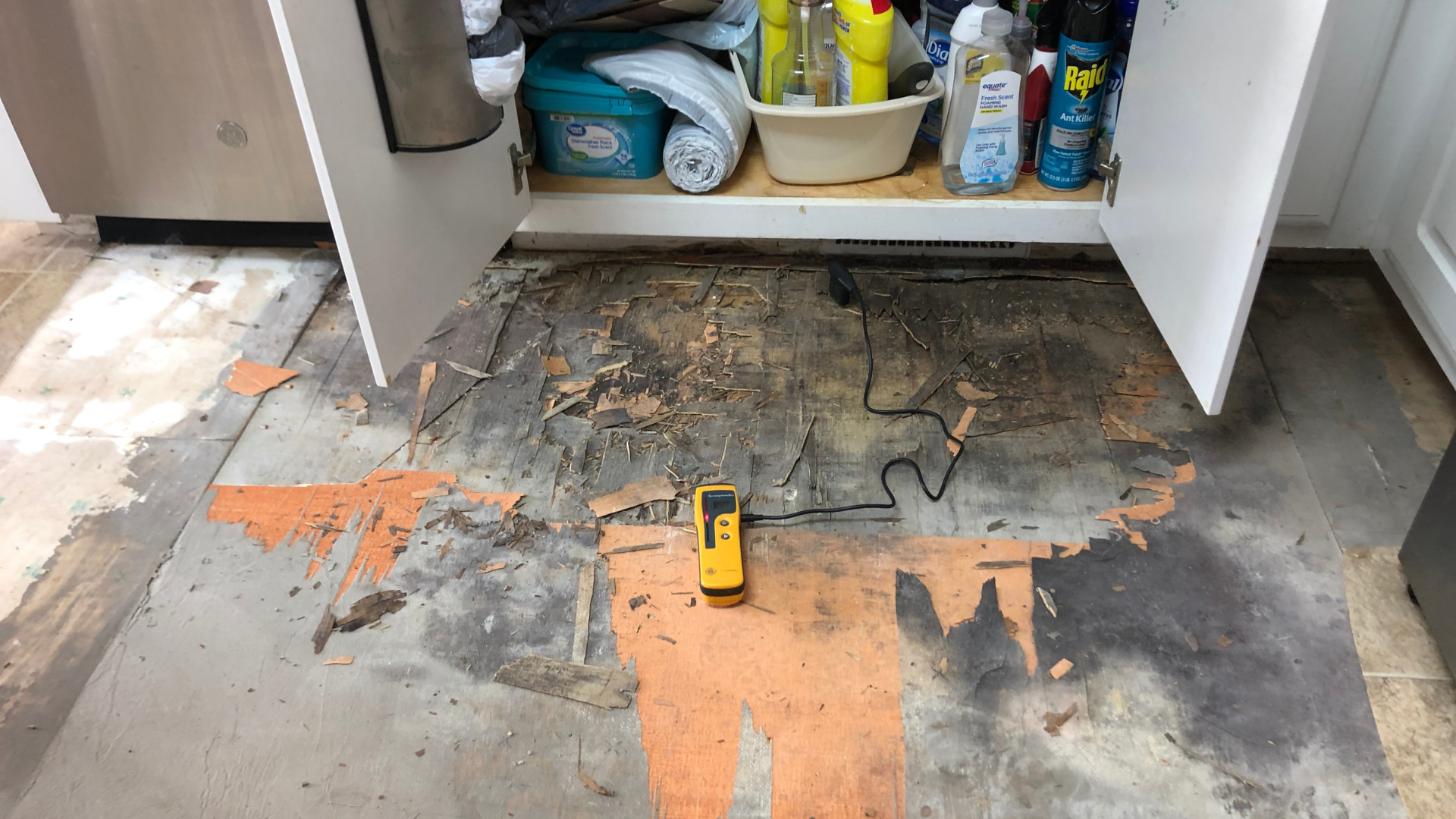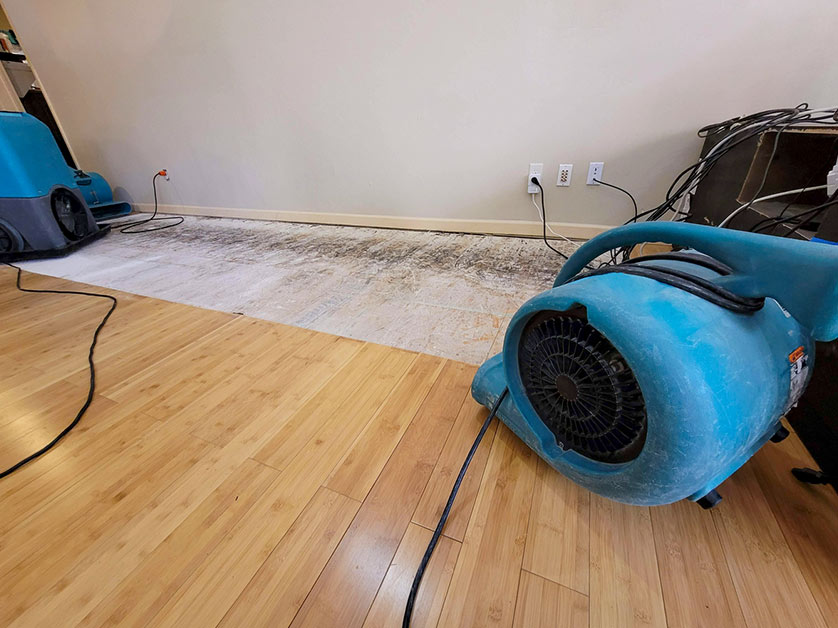Top Tips for Effective Water Damage Restoration: Protect Your Residential Or Commercial Property Today
Water damage can strike suddenly, creating significant disturbance and potential risks. Reliable restoration calls for a systematic strategy to minimize additional injury. From assessing the damage to implementing preventive procedures, each step plays an important duty in protecting building. Understanding these methods can make all the difference in the results of a water-related crisis. What essential activities should be prioritized to assure thorough security?
Analyze the Damage Quickly

Shut down the Water
Turning off the supply of water is an essential action in protecting against more damage during a water-related event. When a leakage or flooding happens, prompt action is essential to decrease the extent of the damage. Situating the main water shut-off shutoff must be a priority. This valve is commonly located near the water meter or where the water line gets in the building. Once located, transforming the valve clockwise will quit the circulation of water. In instances where the major valve is hard to reach, individual shut-off valves for home appliances might additionally be used. Immediately closing off the water system not only protects the residential property from additional harm yet likewise helps with the subsequent restoration process, making certain that healing efforts can begin right away.
Get Rid Of Excess Water Promptly
Eliminating excess water quickly is crucial for decreasing damage and stopping mold and mildew development in affected areas. The longer water remains touching products such as drywall, wood, and insulation, the better the risk of architectural damage and the development of mold and mildew. Homeowners ought to act quickly to assess the circumstance and make use of proper tools, such as wet vacuums or pumps, to remove standing water successfully. If the quantity of water is considerable, calling professional restoration services might be needed, as they can supply specialized tools and experience. Furthermore, removing furnishings and items from the damaged location can aid to reduce damage and help with the total restoration procedure. Timely action not just protects property however also aids in a smoother recovery journey.
Dry the Affected Location
After removing excess water, it is important to dry out the afflicted location extensively. This involves removing any standing water and boosting air flow to assist in evaporation. Effective drying will certainly help prevent mold development and more damage.
Get Rid Of Standing Water
Quickly addressing standing water is crucial for efficient water damage restoration. The presence of stagnant water can lead to additional property damage and produce an environment helpful to mold development. To minimize these threats, it is vital to eliminate standing water as promptly as feasible (Water Damage Restoration). This procedure generally includes making use of submersible pumps, wet vacuum cleaners, or specialized extraction equipment. Experts suggest examining the deepness and level of the water prior to choosing the suitable method for elimination. Safety and security preventative measures ought to likewise be taken, consisting of wearing safety gear and ensuring electricity is transformed off in impacted locations. Once the standing water is effectively removed, the drying out process can begin, better protecting the building from ongoing damage
Rise Air Flow

Examine for Mold Development
Mold and mildew development is a severe worry following water damage, as it can lead to health problems and structural damage. After any flooding or leaks, it is essential to perform a detailed examination of the affected areas. This includes checking hidden areas such as behind walls, under carpetings, and in attics or cellars where wetness may remain. Indications of mold include a moldy odor, discoloration on surfaces, or noticeable development. Residential or commercial property proprietors ought to utilize safety equipment when examining, as mold and mildew spores can position health and wellness threats. Flood Cleanup Services. If mold and mildew is found, it is vital to resolve it quickly, as delaying remediation can aggravate the trouble and raise the threat of significant health and wellness worries for occupants. Early intervention is key to efficient mold and mildew monitoring
Repair and Restore Broken Frameworks
When dealing with water damage, it is important to first examine the structural integrity of the influenced areas (Water Damage Restoration). This evaluation aids recognize possible risks and informs the essential repair service methods. Engaging professional restoration services assures that the restoration process is carried out safely and properly
Analyze Structural Honesty First
Before starting any type of water damage restoration, it is vital to examine the structural stability of the afflicted area. This analysis aids identify any kind of endangered components, such as structures, wall surfaces, or beams, which might position security risks. Evaluating for indications of bending, breaking, or mold development is vital, as these signs can reveal underlying damage that needs instant attention. In addition, comprehending the level of the damage can direct restoration efforts and identify whether repairs are possible or if substitute is essential. It is important to record findings extensively, as this information can be useful for insurance policy cases or future reference. Prioritizing architectural evaluation guarantees that restoration efforts continue securely and successfully, eventually safeguarding the residential or commercial property and its occupants.

Usage Specialist Restoration Services
Using specialist restoration solutions is essential for successfully fixing and recovering broken frameworks after water events. These specialists possess the necessary training, devices, and experience to assess and alleviate water damage completely. They can determine hidden issues, such as mold development and structural weak points, that might not be quickly evident. Specialist services also utilize sophisticated drying strategies and equipment, making certain that all wetness is removed to protect against more damage. In addition, they stick to market criteria and regulations, making certain that the restoration procedure is risk-free and effective. By engaging restoration professionals, property proprietors can speed up recovery, minimize lasting damage, and inevitably protect their financial investment - Flood Cleanup Services. This positive approach is vital in preserving the honesty and security of affected structures
Stop Future Water Damage
To properly avoid future water damage, homeowners need to take on a proactive technique to repair and maintenance. Routine inspection of roofings, seamless gutters, and downspouts is crucial; clogged up gutters can lead to water overflow and roofing system leaks. Furthermore, looking for leakages in plumbing fixtures and appliances can prevent prospective damage. Property owners should also think about setting up sump pumps in cellars or low-lying areas to handle water buildup. Sealing cracks in structures and making sure proper drain around the home are crucial actions in safeguarding versus water breach. In addition, maintaining humidity levels with dehumidifiers can stop mold and mildew development. By applying these preventative steps, home owners can greatly decrease the threat of water damage and secure their property for the long-term.
When a water damage event happens, it is crucial to assess the damage quickly to alleviate additional issues. Eliminating excess water immediately is important for minimizing damage and preventing mold growth in affected locations. more information Promptly resolving standing water is vital for reliable water damage restoration. The existence of stagnant water can lead to additional property damage and create a setting favorable to mold and mildew development. Prior to launching any water damage restoration, it is necessary to analyze the architectural stability of the afflicted location.